We test dozens upon dozens of Xbox headsets to bring you the best recommendations for every user, every price tier, and every feature.
I’ve been personally testing Xbox headsets for almost a decade now, having published dozens of reviews on Windows Central since I joined. We examine every angle of the sound experience, every part of the design, and showcase every feature to help you make the best decisions for your setup. When it comes to recommending the best Xbox headsets, I think many stumble at the “one size fits all” approach. In reality not every user needs a multi-function wireless receiver in their headset, and not every user wants mic-monitoring, and so on.
It’s with this in mind that I built this guide, to showcase the best options from a wide variety of usage types and price points, to help you get the most out of your Xbox sound experience.
What are the best Xbox headsets right now?
While writing this guide, I paid careful attention to the fact that not every headset is ideal for every person. There’s certainly not a “one-size-fits-all” approach to choosing the best Xbox headset for you, especially when you consider things like features you want (or need), and what your general setup is like.
The two main differences between Xbox headsets in 2022 boil down to wired, and wireless. Although in a way, all Xbox headsets are wireless, since you even connect wired headsets directly up to your wireless controller, generally. The upside of a wired headset is that they’re generally cheaper than the wireless counterparts, since they don’t need batteries or wireless radio transmitters to connect to your console. They use a 3.5mm cable that plugs into the underside of your Xbox console.
Wired headsets on Xbox also come with some basic spatial sound for free using your console’s Windows Sonic algorithm, and also some basic mic monitoring through Xbox party chat — although on-board solutions tend to be better, they’re usually exclusive to more expensive wireless headsets. Indeed, the main downside of a wired headset is that they often sport less features than wireless headsets. In addition, using a wired headset with an Xbox controller that is plugged in and charging also can introduce nasty distortion into your sound mix, and also for those listening to you through party chat on your microphone. Wireless headsets sidestep some of these limitations, but it comes at a price.
To get good sound from a wireless headset, you often have to pay $100 or more when compared to a wired headset for the privilege, but you most likely will get a boatload of added features as a result. Wireless headsets sometimes come with Bluetooth, so you can mix sound from two different sources into one headset. Using something like the Arctis Nova Pro or the Turtle Beach Stealth 700 Gen-2 MAX, for example, you can feed comms from Discord on a phone or PC, while using the Xbox signal for your game sound.
Wireless headsets often come with onboard software too for configuring things like equalization, mic-monitoring volume, and even active noise cancellation at the higher end. The downside is of course, the price, but also the fact you often have to keep them charged up. Over very long periods of time (years), lower-quality wireless headsets batteries may completely dry up too, with no way of replacing them easily. Although we are seeing a trend of swappable batteries coming to wireless headsets too.
In our top Xbox headset picks guide, we list out as many features as possible to help you compare, contrast, and choose what’s best for your set up. We also list things like frequency response to give you an idea of how broad each soundscape is per headset, although it doesn’t tell the full story. Sound reproduction can be a bit subjective to the listener, as things like age, general preferences, and even skull and ear shape can affect how we perceive sound. Headsets that go beyond the standard 20 Hz to 20 kHz range may offer a richer sound experience as frequencies that dissipate beyond the standard range sound more natural as they slip out of your perception. That being said, each headset is unique essentially based on a wide variety of factors, so we tend to focus on a general idea of what you’ll be getting out of each headset’s soundscape. Some headsets prioritize a more realistic and balanced cinematic experience, while others focus on tactical play, emphasizing highs that might give away an enemy position, for example. Some headsets even let you configure this using accompanying apps or software tools, or even onboard switches and features. Turtle Beach’s “Super Human Hearing,” for example, gives priority to frequencies where sound effects like footsteps or enemy movements may sit.
In any case, here are our picks for the best Xbox headsets you can buy in 2022. If you’d like to ask any further questions, feel free to hit me up on Twitter @JezCorden, or join us in the Windows Central Discord.
Best Xbox headsets right now
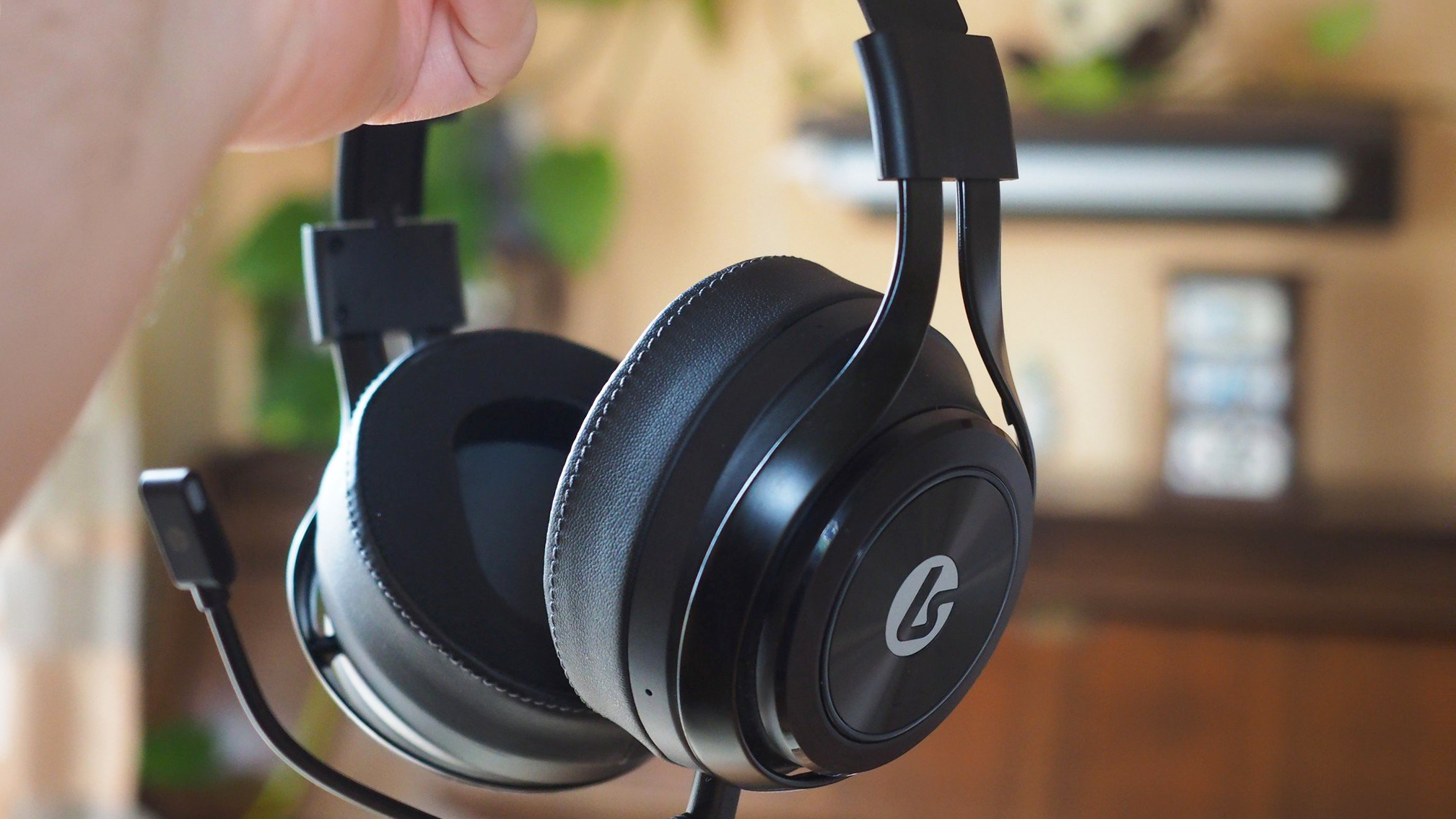

A few years after launch, the LucidSound LS35X is still my go-to recommendation for the vast majority of Xbox gamers due to its comfort, price, general quality, and ease of use.
The LucidSound LS35X is a direct-to-Xbox wireless headset, meaning it connects straight to your console without any intermediary USB dongle or anything like that. It’s charged via an included USB cable, and sports a generous battery life of up to 15 hours.
The headset itself is well-constructed for the most part, with metal-reinforced connectors, and hinges, with a wide degree of adjustability. My only real criticism of this product is the volume dials, which aren’t the most intuitively designed inputs ever made since they behave more like buttons than dials, but once you get used to them they at the very least do the job. The only other downside is that the headset requires a PC to update its firmware, but if you grab the latest version of the product from Amazon, you shouldn’t need to worry about that.
The headset boasts tremendous bass reproduction and a balanced profile that is immersive for gaming and provides good spatial and tactical awareness in competitive shooters. The frequency response is pretty standard, but at this price point, it remains impressive. Where this headset punches above its weight is the microphone, which beats out competitors quite soundly in this price bracket. I would argue that the mic on the LS35X often beats far more expensive headsets too, ensuring that your teammates can hear you clearly. The headset also sports mic-monitoring, so you can hear yourself speak while talking. You can also detach the mic if you’re not into the more social aspects of gaming.
My favorite aspect of the headset is arguably its comfort and ergonomics. The generous cushioning is lined with coolant gel which feels incredibly pleasant on warm ears, and the fine fabric veneer also feels airy and light even through long gaming sessions.
This headset strikes the perfect balance between price and quality. It avoids the pitfalls of some of the slightly cheaper headsets in this range, and sticks to the basics to avoid higher price points some competitors are offering. For the vast majority of Xbox gamers, this remains my go-to recommendation.
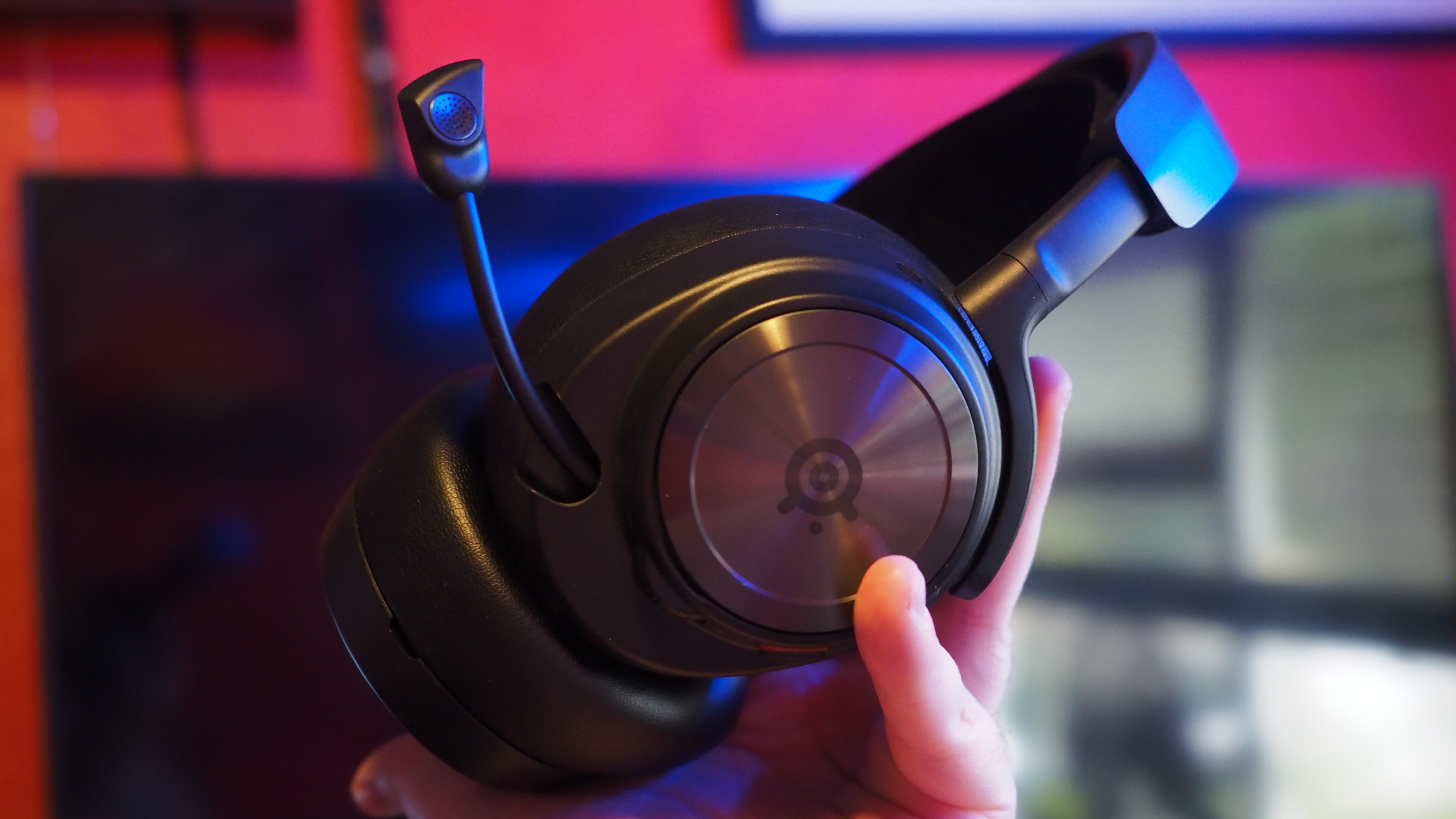

The SteelSeries Arctis Nova Pro is arguably the best-of-the-best Xbox and PC gaming headset right now, but it’s not cheap. The $350 package however goes above and beyond many of its competitors, offering unique features that, if you need, no other headset is able to provide right now.
The SteelSeries Arctis Nova Pro is unique in various ways. First and foremost is simultaneous connectivity. For those who have multiple consoles or gaming platforms in one place, this is the absolute best headset to get owing to its ability to incorporate Xbox, PC, PlayStation, Nintendo Switch, and Bluetooth sources all at once into a single receiver. The Nova Pro receiver has multiple USB ports that can integrate multiple devices into a single sound feed, which is great for multi-platform gamers and content creators. The receiver is also incredibly well designed, with an attractive pixel-style display and an intuitive dial-button design. It’s easy to switch from Xbox to PC and back again, while also being able to hook up Bluetooth devices as well. Finally, the receiver even has a dock with a spare battery, meaning you can be sure to always have a battery charged up and ready to go at a moment’s notice.
The headset is incredibly light too, given how powerful it is, and even has on-board active noise canceling for good measure, making it one of the few Xbox gaming headsets to support ANC.
Where this headset really shines is the overall sound. I had to tweak it a bit to get it into a place I liked it, but the software gives you a large degree of control over the EQ experience and even has some presets for specific games. You can tune the headset very easily between a more immersive and realistic cinematic experience to something more tactical, with a good soundscape and solid sound reproduction. You can get even finer quality sound by connecting it to the receiver using the included 3.5mm cable too if you want to get really serious about your sound experience. The software experience could be a little better, and the microphone audio is a disappointment for a headset that costs as much as this, but it more than does the job.
The headset is also very comfortable with leatherette-style cups, with a lightweight design. It’s also very attractive in my view, with metal accents and a subtle profile. You can even swap out the speaker plates for custom designs on SteelSeries’ website. The microphone is fully retractable in the cup housing, meaning you can use this headset while out and about as well, making it just a great all-round headset for gaming, lifestyle use, and music.
But yes, it isn’t cheap. This is the headset for the Xbox gamer who wants a true jack-of-all-trades type all-in-one package deal.
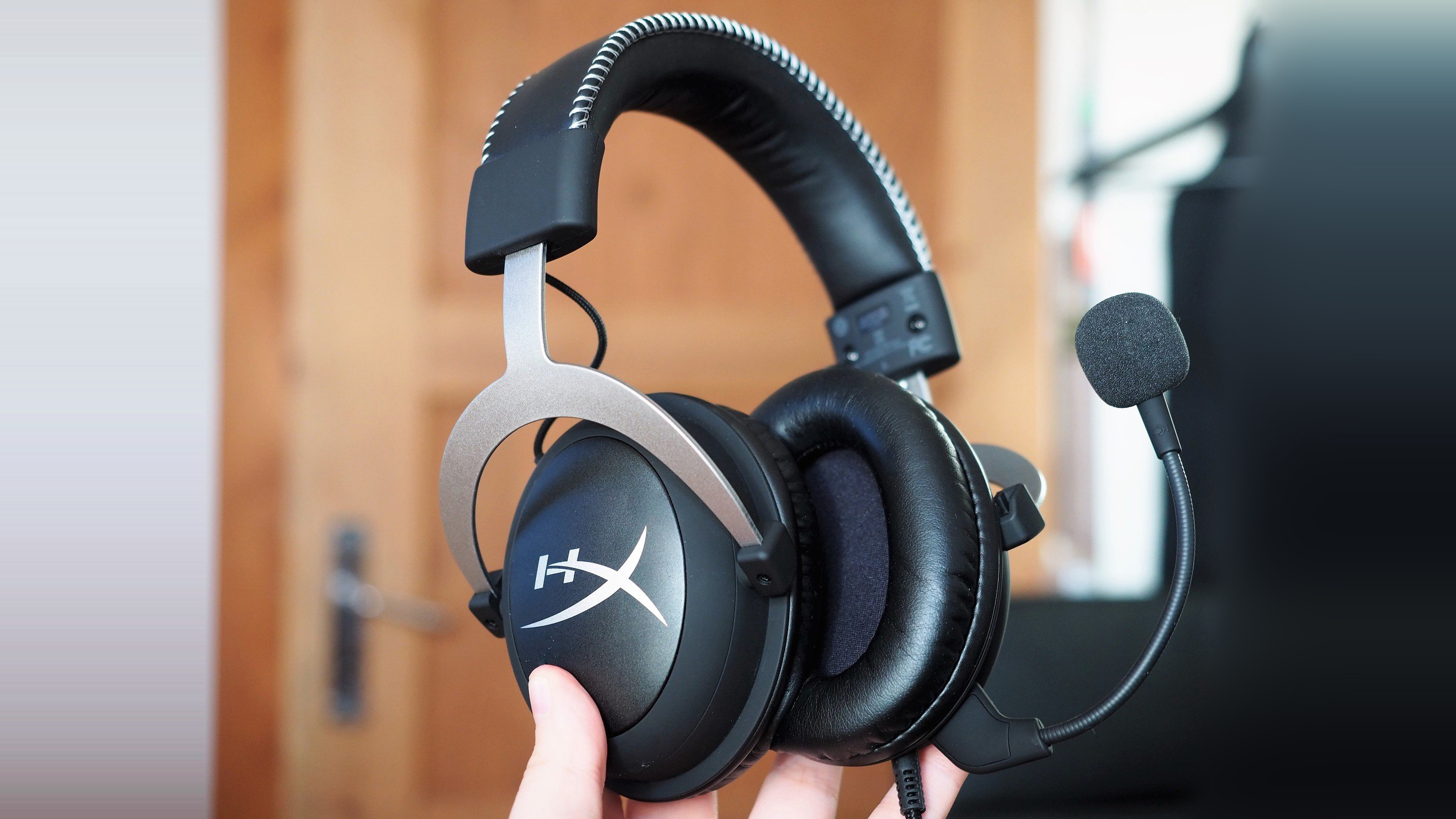

The HyperX CloudX remains my go-to pick for those who don’t necessarily need a headset with all the bells and whistles. This headset is the very definition of basic, but it delivers above and beyond in the most important departments, which is why it’s still my preferred best budget Xbox headset.
The HyperX CloudX has a very broad frequency response and a cavernous soundscape which works great with platforms like Dolby Atmos and Windows Sonic on Xbox consoles. I really enjoy the warm cinematic sound the HyperX CloudX offers, despite the general lack of onboard EQ options and the like. It punches well above its weight in my view given its price, which during sales can often go below $40.
The CloudX also lives up to its namesake, with a cloud-like fit and weight making it one of the most pleasant headsets to wear on the market. There’s a reason this headset has only received minimal changes since its introduction over five years ago — if it ain’t broke, don’t fix it.
Leatherette cups and headband, a detachable boom-style microphone, in-line audio controls, a high-quality braided cable, with audio and ergonomics that feel like they belong on a far more expensive product — this is the ideal entry-level gaming headset for Xbox users.
Best wireless Xbox headsets
While those are my absolute top picks in the major categories, they might not be the best for you personally. As such, I’m rounding up some additional picks across both wired and wireless paradigms, starting here with wireless.
Wireless headsets generally come in multiple forms. You can either get a proprietary headset that uses its own 2.4 GHz signal, either via some sort of USB dock or USB dongle. With Xbox, you can also get “Xbox Wireless” headsets, that connect directly to your Xbox console in much the same way as your Xbox controllers do. Some of these headsets come with added benefits like Bluetooth interconnectivity, allowing you to connect your headset to your Xbox using Xbox Wireless, and a second device simultaneously like a PC or phone using Bluetooth.
The best wireless headsets can be very pricey, though, owing to the quality of materials needed to get decent battery life, construction, onboard software, and other similar things. Cheaper wireless headsets are available, but they often make rather broad compromises as a result. Most wireless headsets tend to start at $99, although they can dip lower during sales like Amazon Prime Day or Black Friday.
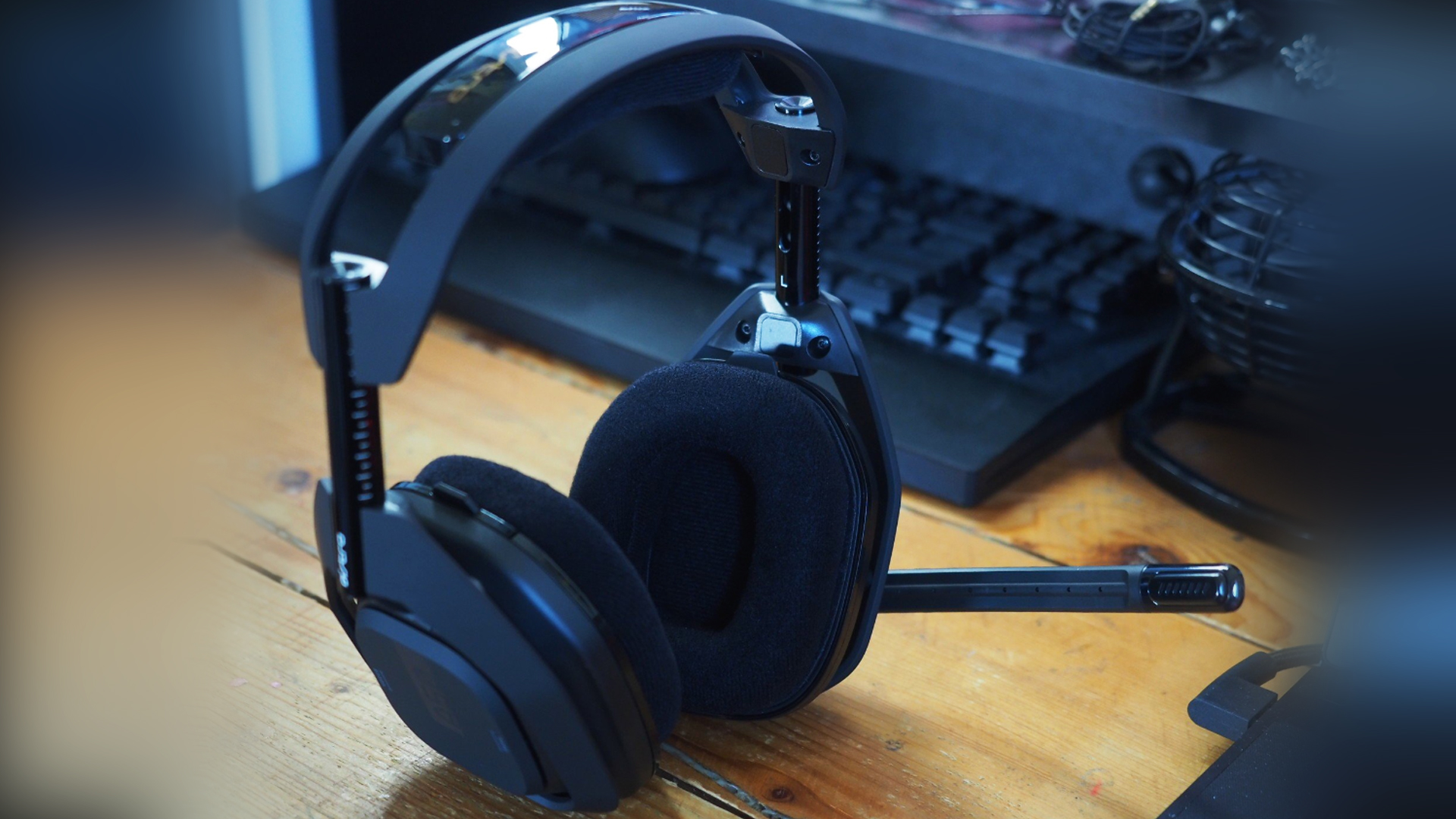

The Astro A50 was my go-to personal Xbox headset for years and years, and has only recently been supplanted by the Arctis Nova Pro which edges it out for me slightly purely due to SteelSeries’ inclusion of Bluetooth. Even then, I still go back and forth on which headset I prefer overall, it’s very close indeed.
The Astro A50 is a pure Xbox and PC headset with a convenient wireless charging dock, which houses the headset and charges the batteries when it’s not in use. The battery life is generous at 15 hours, and will generally satisfy the vast majority of marathon gamers in most scenarios. The battery however isn’t swappable, which means if it ever goes completely flat, you may need a replacement. I’ve had my Astro A50 for a few years at this point, though, and found that it maintains a charge extremely well.
The soundscape is also quite good on the A50, although I’m not a fan of their onboard surround solution (which can be disabled thankfully), although many other reviews have praised it, so it might just be my personal preference. The software is also arguably the best on the market, particularly for Xbox, given that it works on your Xbox console without having to connect a separate app or device to get adjustments. Here you can tweak sound profile, mic-monitoring sidetone volume, noise-gate on the mic, and much more. The app is far better than most of Astro’s competitors in this space, with a simple and intuitive interface.
The audio profile on the A50 is balanced and pleasant out of the box, although not what I would call mind-blowing. Using the apps though you can set up dedicated profiles for specific games, which elevates the experience by a large amount.
The main reason I ended up using this headset for so long above everything else is convenience. As a content streamer, being able to connect a headset to my PC via USB for things like Discord and StreamLabs, and feed in Xbox game sound via the SPDIF cable connected to my TV was an absolute godsend. It saved me from having to put together a more complex solution with audio controllers and the like, and still allowed me to join party chats on Xbox via my PC using the Xbox Game Bar. The charge dock is also great for keeping your playspace nice and tidy, while ensuring your headset never runs out of juice.
For those who think the multi-receiver, ANC-enabled, Bluetooth-laden Arctis Nova Pro might be overkill for their gaming needs, the Astro A50 is the next-best option.
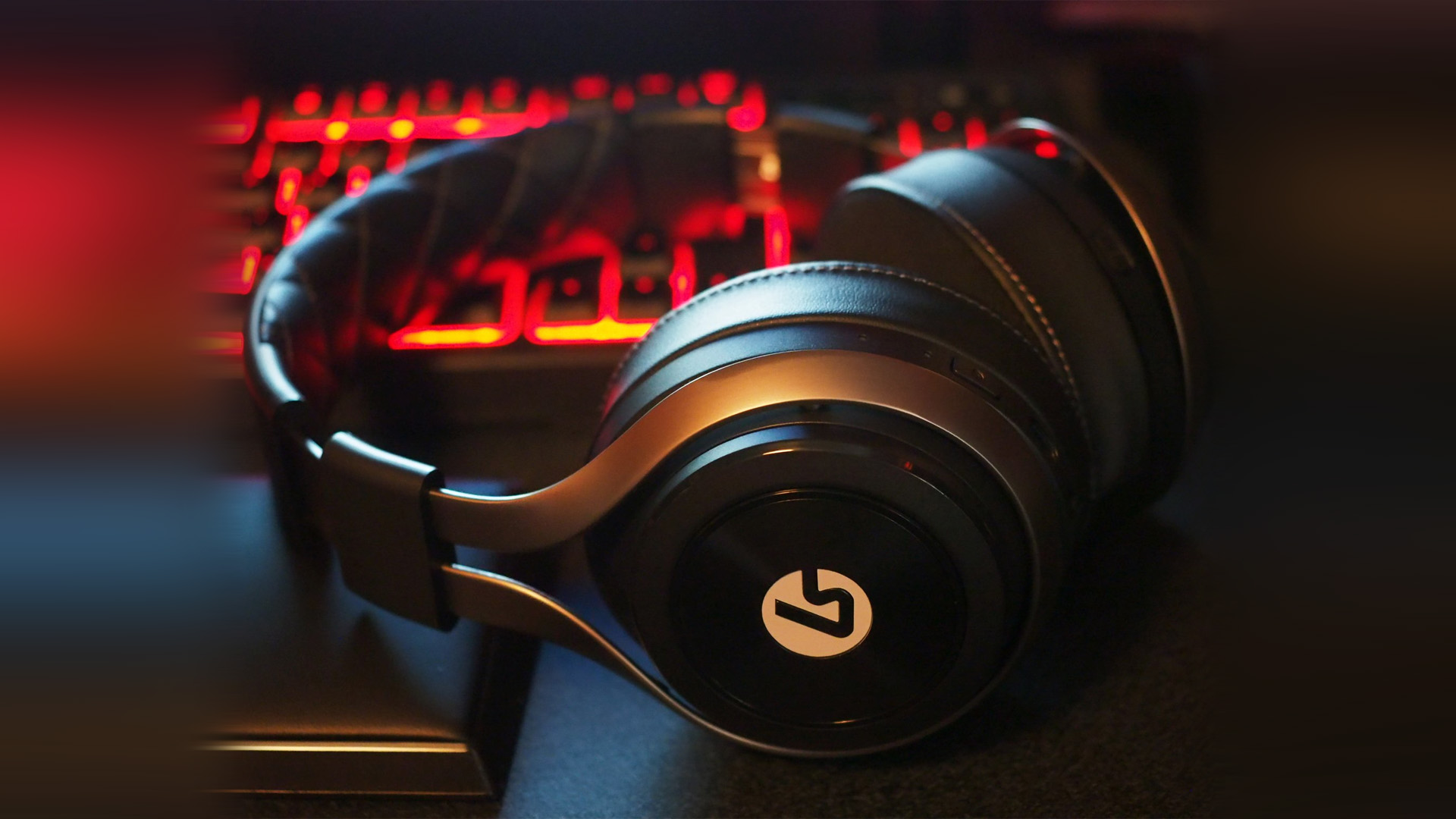

The LucidSound LS50X was my go-to headset as well for quite a long time, owing to its ability to mix Bluetooth and Xbox audio into a single audio profile. I only switched to the A50 for the battery charge dock, but many won’t need to spend the extra $100+ for those extra frills. For those who don’t need (or want) to spend that much, say hi to the far more affordable LS50X.
The LucidSound LS50X is among the best Xbox headsets on the market and is the big brother of the LucidSound LS35X, which remains our top pick for the best all-rounder Xbox headset. The LS50X takes things up a gear by adding Bluetooth support into the mix, allowing you to connect a nearby phone or PC for comms in addition to your main sound channel on Xbox or PC. Indeed, unlike the direct-to-Xbox LS35X, this headset comes with a USB wireless dongle that can be flipped between Xbox or a Windows PC for interference-free wireless audio.
The LS50X sports a detachable microphone and an attractive subtle lifestyle design, making it an option for those who want to take it on the move for music using its Bluetooth features. And given the sound quality, you may well want to. The LS50X has a very balanced sound profile that makes your top tunes sing and your favorite games pop, with an immersive and cinematic blend. The main downside of this headset is the software experience, or perhaps, the lack thereof. LucidSound offers no ability to tweak the features of their headsets, unfortunately, so if you don’t like the out-of-box experience, there’s nothing you can do about it. Thankfully, for me, I loved it right from the get-go, so it wasn’t a particularly huge deal. That being said, if you don’t have a PC, you won’t be able to update the firmware on the LS50X sadly, which is another downside. The LS50X has been out for a couple of years at this point, though, and most new stock allocations will arrive fully updated with all the fixes for bugs that were present in the early iteration of the product. It’s a mature product at this point, that shouldn’t give you any problems if you buy new.
There are some slightly cheaper options if you want an Xbox headset with Bluetooth such as Microsoft’s own Xbox Wireless Headset, but it compromises heavily on audio quality, comfort, and materials that it’s hardly worth recommending. If you can afford it, I would recommend pushing a bit to grab this one instead.
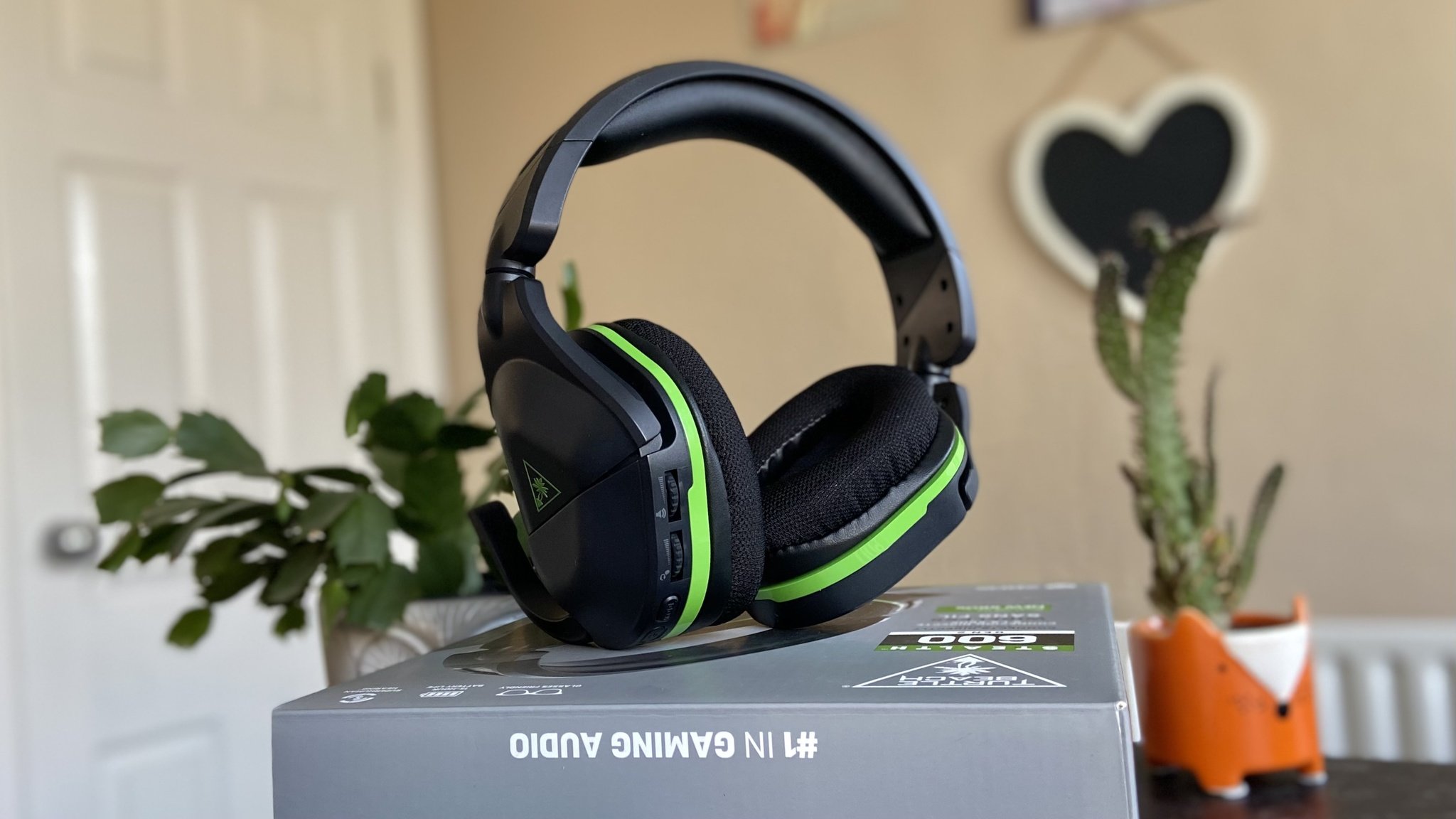

The Turtle Beach Stealth 600 (Gen 2) is arguably the best entry-level wireless headset for Xbox users, with direct-to-Xbox connectivity and a decent array of features. It’s not to be confused with the Stealth 600 Gen-2 MAX however, which is a different headset entirely (although, confusingly named). The Gen-2 MAX is a fair bit more expensive owing to its monstrous 48-hour batteries and multi-platform USB dongle. This regular Gen-2 is a pure Xbox wireless headset, and I am recommending it for those who want to ditch the cables without ditching their bank liquidity.
The Turtle Beach Stealth 600 (Gen-2) refines the previous version with improvements across the board. Better materials, slightly improved audio, and refinements to the design make this a great $99 dollar entry point, with a 15-hour battery life for good measure. The main downside I would argue when compared to something more expensive like the LS35X or LS50X is comfort. The Stealth 600 (Gen 2) earcup materials are of a low grade, and the green accents give it a gaudy toy-like appearance that lacks modern appeal. However, if you’re not bothered too much about these things, it more than gets the job done.
The Stealth 600 audio punches well above its weight, with great bass and treble. The headset also has decent software for added configurations, with decent mic-monitoring side-tone atop a flip-to-mute microphone. Turtle Beach’s audio profiles tend to skew toward tactical play, emphasizing sound effects that might give you an edge in games like Call of Duty. I can safely say I have gotten kills as a result of Turtle Beach’s headsets due to their sound tuning.
This headset has the best price-to-quality ratio of any wireless Xbox headset out there, and should be the first thing you consider if you don’t need Bluetooth, and don’t want to break the bank.
Best wired Xbox headsets
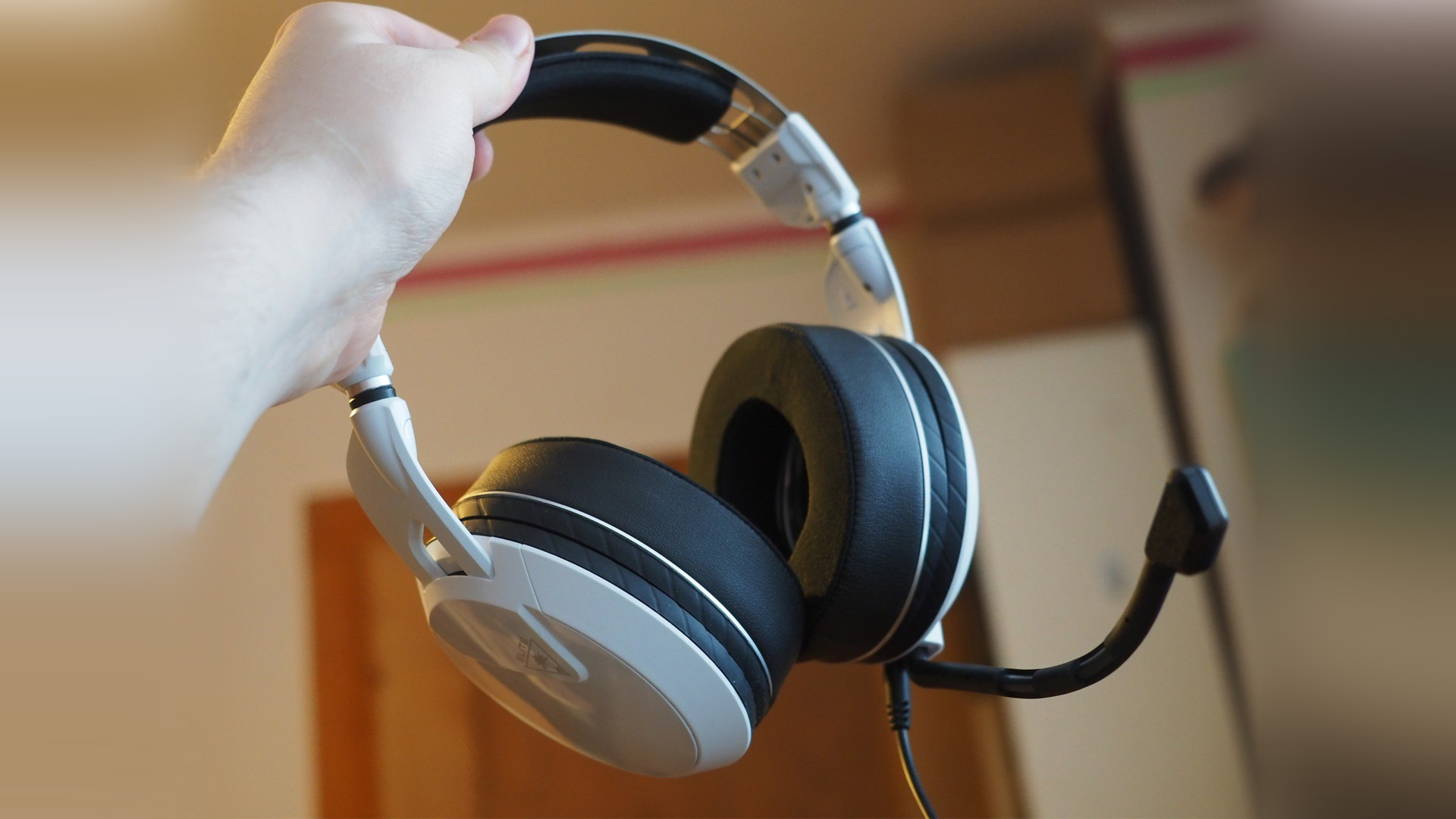

Turtle Beach’s Elite Pro 2 is another headset that I personally used as my primary set for a lengthy amount of time coupled with their TAC audio controller, owing to its supreme comfort, durable design, and truly impeccable soundscape.
The Elite Pro 2 as a wired headset doesn’t sport a huge amount of features that a fully wireless system often does, deferring to 3.5mm connectivity through an Xbox controller as its primary interface with your console. Where it does deliver is big, cavernous sound which works incredibly well coupled with Windows Sonic or Dolby Atmos. The sound profile is cinematic while also giving you tactical spatial awareness, and is one of the few headsets I can definitively attribute additional kills to in games like Battlefield and Call of Duty. The microphone is no slouch either, although you probably won’t be creating content on it, it does the job for communication online.
The headset is also definitively hard-wearing, with steel construction and metal accents. This is one headset that will take a significant amount of punishment, arguably offsetting its higher price point. The on-ear experience is also incredible, with thick fine fabric cups that feel pleasant and smooth against your skin, complete with cooling gel-infused pads that are genuinely heavenly. If I wasn’t a big wireless junkie these days, this is most likely what I would be using.
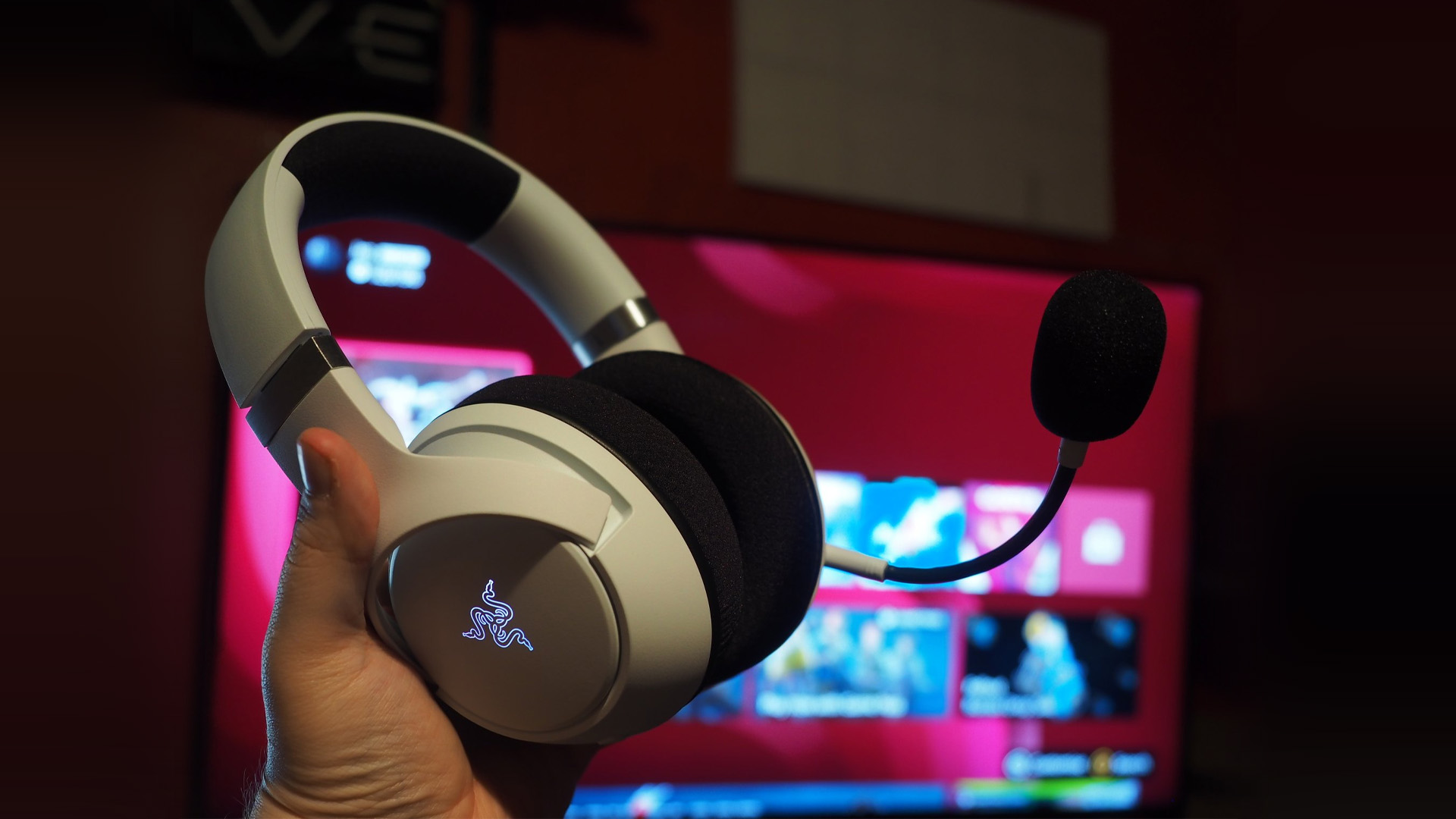
The Razer Kaira series is Razer’s mid-range headsets designed for Xbox consoles, which come in various shapes and sizes. The Razer Kaira X we’ve listed here is their wired version, but there’s also a Razer Kaira Pro that is wireless and comes with Bluetooth as well for good measure.
This headset comes in at the same price as my top pick for this price point, the HyperX CloudX up above, which beats this headset for raw sound quality frankly. The Razer Kaira X simply doesn’t reproduce bass as well as the HyperX CloudX, although it is quite close. I’ve recommended this headset primarily because the microphone is a cut above the HyperX CloudX, and if you were someone looking specifically for a white headset to go with your Xbox Series S, this might be a better option for you.
The Razer Kaira X has on-ear controls as opposed to in-line controls often seen on wired headsets, and sports a braided cable and a detachable cardioid mic that has no business being this good at this price point.
What to look for in an Xbox headset
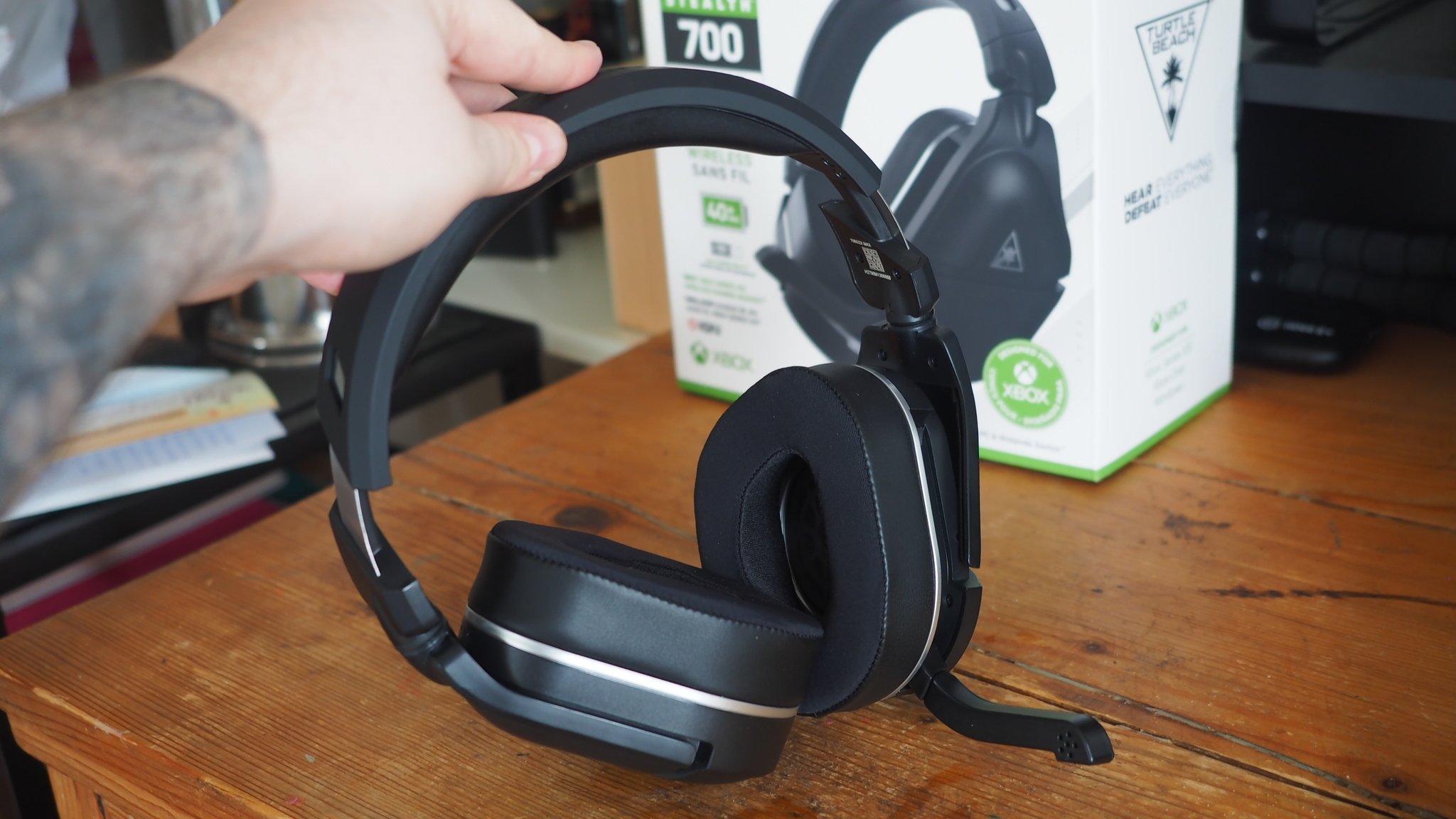
Ultimately when choosing an Xbox headset, you should first think about what you actually need. If you use your headset frequently, you may prefer to get something a little more expensive and hard-wearing — since cheaper headsets often come with wear and tear concerns if you’re not being absolutely overly careful with them. It may be more cost-effective from the outset to go with something a little higher-end.
When choosing a headset, I generally gun for trusted brands. There are dozens upon dozens of cheap-looking toy-like headsets that may seem like an attractive option due to their price, but they’re more often than not something that will break on you after a few weeks, or provide a terrible sound experience. The best cheapest headsets generally start at around $40 or $50 dollars in my experience, with the wired HyperX CloudX at $60 being my preferred recommendation for those who don’t want to break the bank too much. But even then, wired headsets often lack many of the bells and whistles that come with a more expensive wireless option, and have downsides such as interference while charging your controller.
The first decent wireless Xbox headsets seem to start at $100, but you can sometimes snipe them for less with a good deal. Headsets like the Turtle Beach Stealth 600 Gen-2 make a great entry-level wireless pick for those who don’t need extraneous features and just want to take their sound experience out of their TV speakers, but you can spend a little more and get our top pick for best all-round Xbox headset, the LucidSound LS35X.
At the higher end, you have active noise canceling headsets like the Beoplay Portal and the Arctis Nova Pro, which can also be used as lifestyle headsets for going out and about thanks to their Bluetooth integrations. Mid-range options like the LucidSound LS50X can also offer a similar experience at a much lower price but may lack some of the additional features such as multi-device inputs or configuration software.
When is the best time to buy a headset for Xbox?
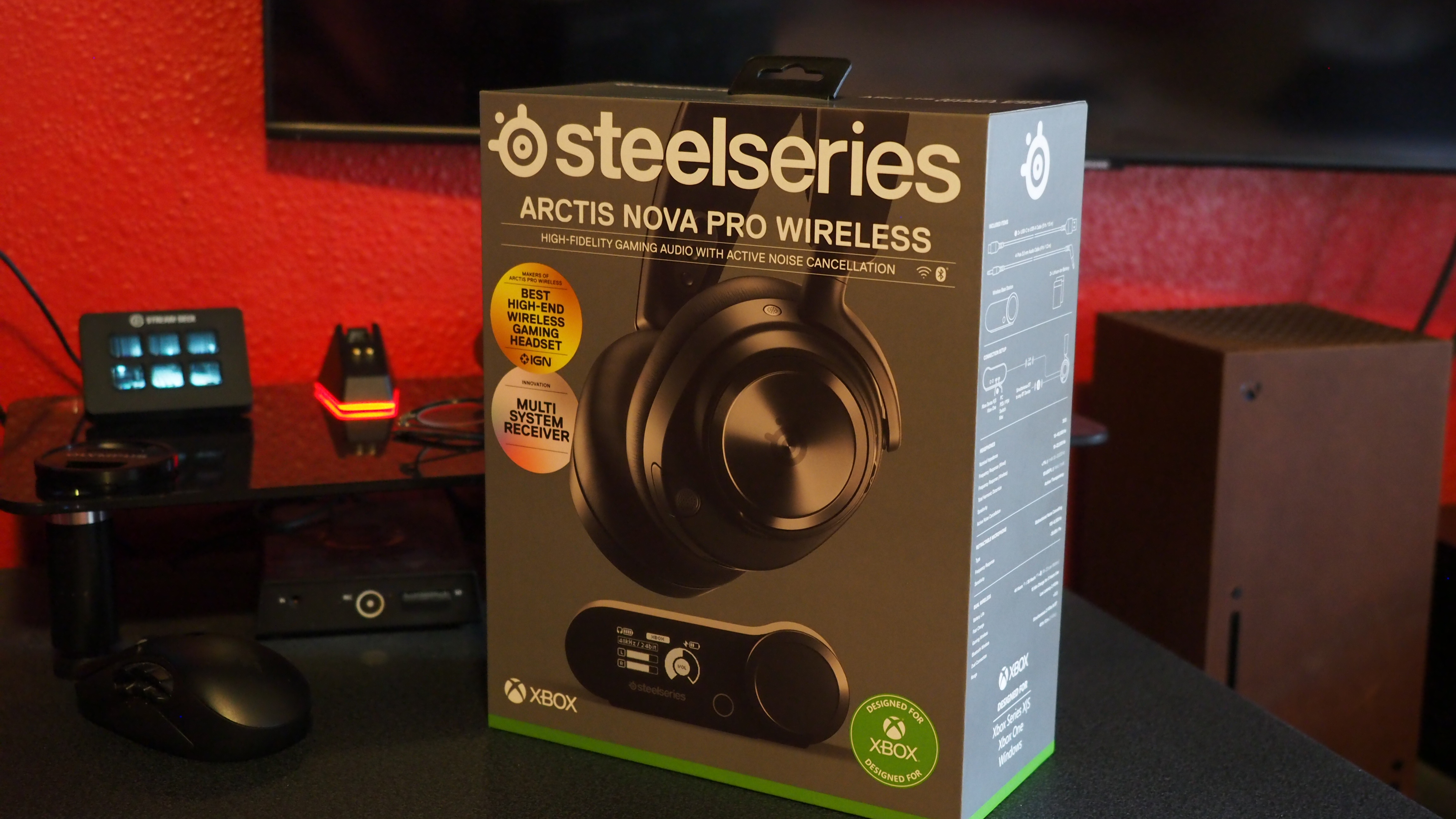
Xbox headsets enjoy random price cuts throughout the year, and using a price-tracking app like Honey in your web browser can help you figure out and find the best deals. I recommend Honey because sometimes it can be unclear if something is a genuine deal, or simply an artificial deal created by the seller to give you the illusion that you’re getting a bargain. Even still, there are often really great sales that can help you score the best Xbox headsets for less.
In the run-up to Black Friday in the autumn, you can usually grab a good deal. Some of the most popular headsets from brands like Turtle Beach, HyperX, LucidSound, SteelSeries, Razer, and so on, often grab deep cuts of anywhere up to 50%. Similarly, Amazon Prime Day will also grant you some good deals. Prime Day typically falls somewhere around late spring or summer and gives Amazon Prime members exclusive access to a variety of bargains on various products. Even if you’re not a Prime member, many manufacturers take the sales opportunity to offer their own cuts on Amazon and other storefronts like Best Buy, or even their own websites.
Planning exactly when to buy a headset can be a bit difficult since headset manufacturers seem to launch new versions of their products at completely random times. It’s not like the video game industry which give you a lot of lead time marketing their games and products. Oftentimes, headset companies will just drop a new product out of nowhere, with a launch date following in the next couple of weeks. It’s not like phones either which generally get yearly-updated versions. Many of the headsets on this list haven’t seen any major revisions for a few years at this point, because, well, if it ain’t broke, don’t fix it. Still, we’ll be sure to bring you all the latest news and reviews on all the best Xbox headsets to help your purchase decisions as smoothly as possible.




